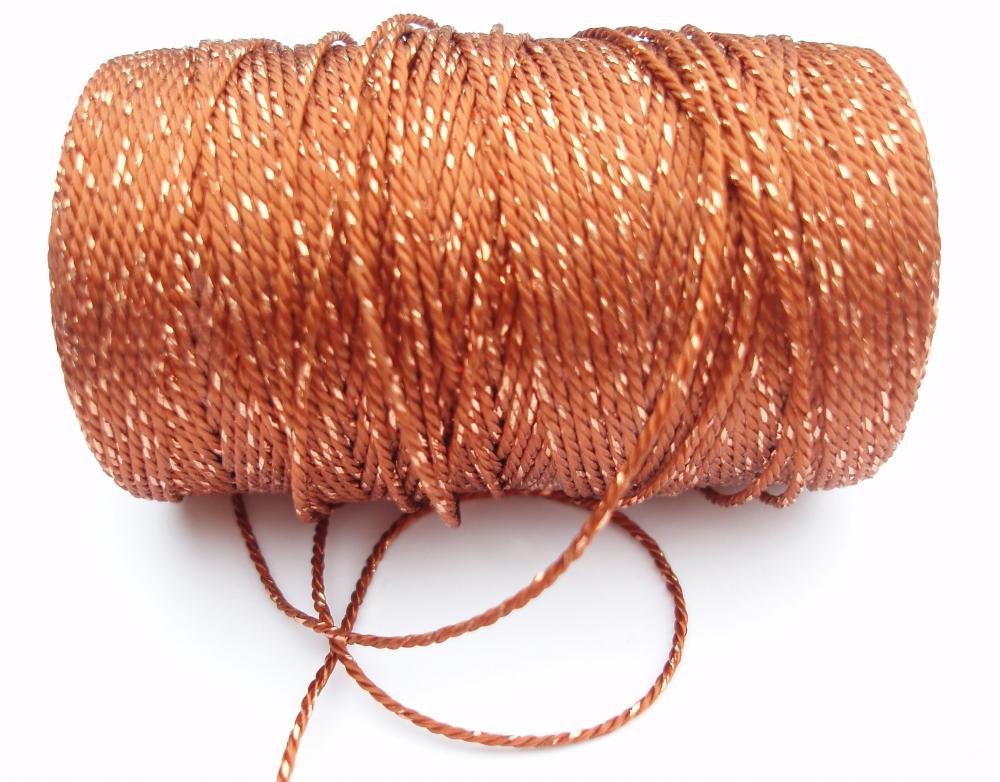At WiseGEEK, we're committed to delivering accurate, trustworthy information. Our expert-authored content is rigorously fact-checked and sourced from credible authorities. Discover how we uphold the highest standards in providing you with reliable knowledge.
How do I Choose the Best Metallic Yarn?
There are many different types of metallic yarn, including yarns made entirely of metallic fibers, yarns with a metallic coating, yarns with metallic thread plies spun together with other fibers, and yarns composed of natural or synthetic fiber with small flecks of metallic material visible in the skein. When choosing a metallic yarn, a fiber artist should consider how much of a metallic shine she wants her yarn to have. Some yarns that contain metal are stiff and not very soft to the touch, so the desired texture of the finished product is also something to consider when making a yarn selection. Generally, as with all types of yarn, the choice of metallic yarn often depends on what type of project will be made with the yarn.
Some metallic yarns have a great deal of shine, particularly those that contain gold, silver, or aluminum. Aluminum is a common modern day substitute for more expensive gold and silver. Other types of metallic yarn may not have as much shine, such as yarn that contains stainless steel. Yarns with steel content are often similar to wire, as they have memory and will retain whatever shape they are molded into unless they are straightened out again. If a fiber artist wants her finished project to be sparkly, the best choice is probably a yarn flecked with small pieces of silver, gold, or aluminum.

While some types of metallic yarn have a slick, smooth surface, others can be somewhat scratchy or prickly to the touch. This is particularly true of yarns that contain a single filament of metallic fiber in a blend with other fibers. These yarns are probably not the best choice for projects like scarves, or any other garment or accessory that sits close to sensitive areas of skin. On the other hand, yarns that are composed with a metallic outer coating or a core of metal with a plastic coating may be slippery, which can increase the incidence of accidentally dropped stitches, particularly in a project that has a complex stitch pattern.

Yarn weight, or the thickness of individual yarn strands, is another important consideration when choosing a metallic yarn. When knitting or crocheting a fitted garment, it is important that the fiber artist achieves the gauge, or number of stitches per inch, suggested by her pattern. Gauge is affected by the size of the knitting needles or crochet hook used, and by the weight of the chosen yarn. Therefore, metallic yarn should be as close in weight as possible to the yarn suggested by a specific garment pattern.

Metallic fibers also require a fair amount of special care. Most yarn that contains metal should be either dry cleaned or hand washed. It is also somewhat difficult to iron garments made out of metallic yarn, because it is possible for certain types of metal to begin melting at high temperatures. Therefore, metallic yarns are not ideal for a project that would normally require frequent washing, such as a baby sweater or a blanket.
AS FEATURED ON:
AS FEATURED ON:













Discuss this Article
Post your comments